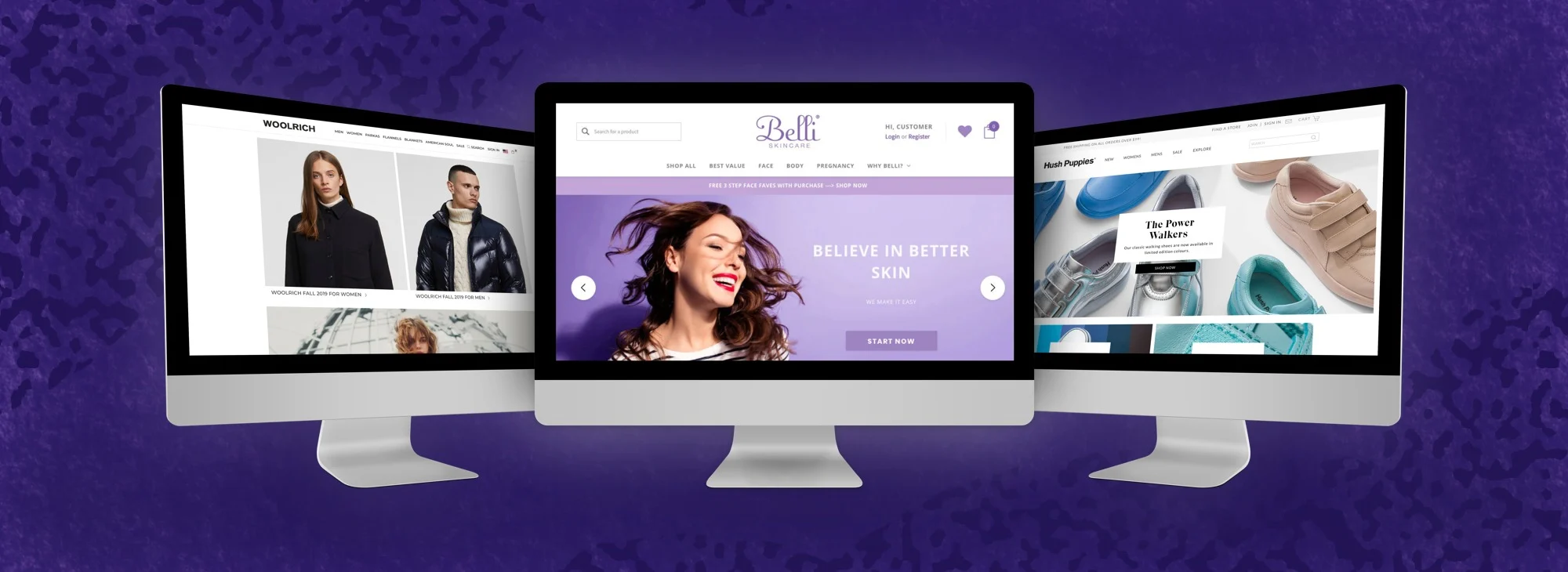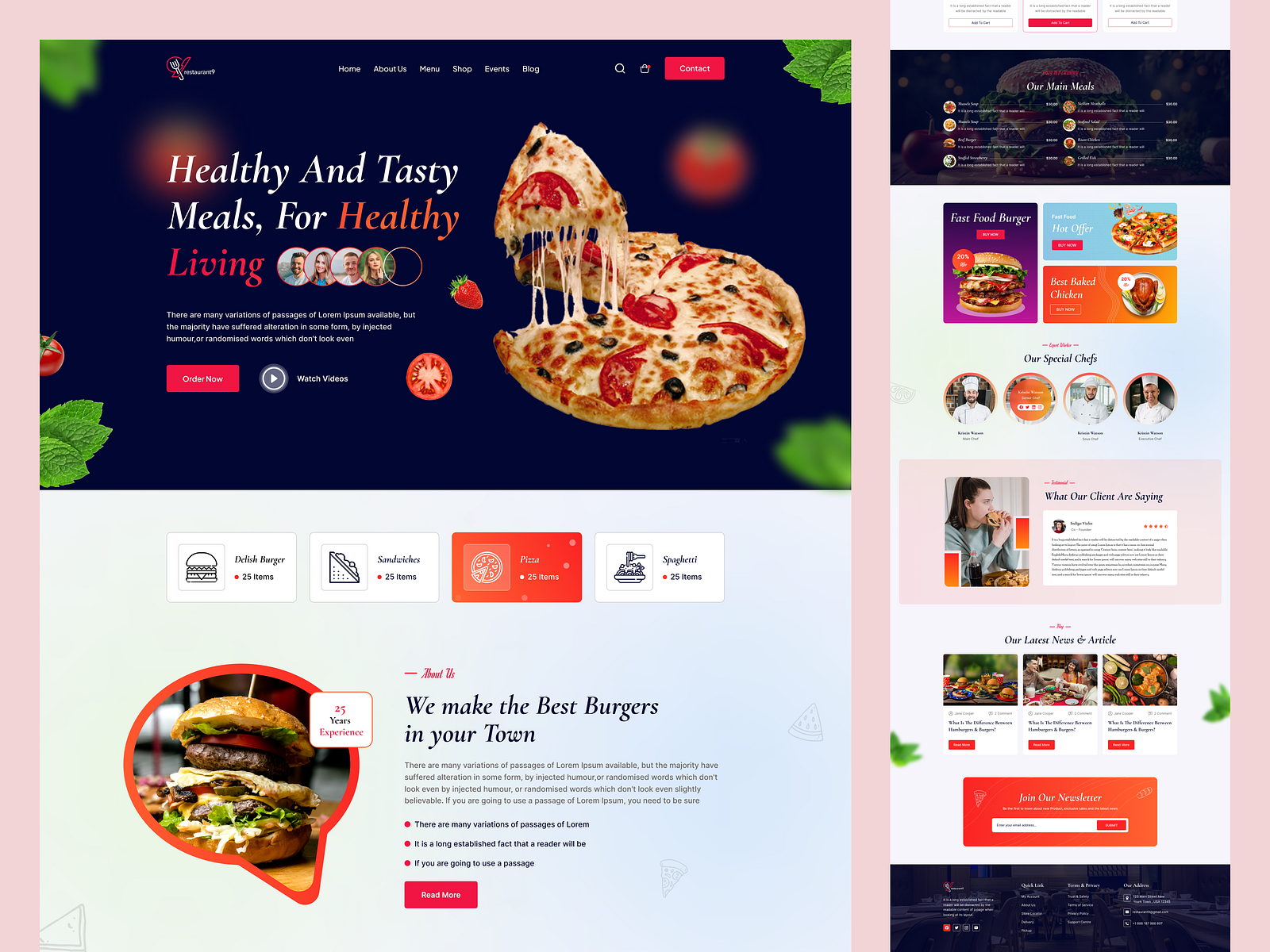The Ultimate Guide to Modern Internet Site Design Trends
In the ever-evolving electronic landscape, contemporary website design fads play a critical function in shaping user experience and interaction. From the rise of minimal layout principles that prioritize simplicity to the influence of strong typography in defining brand name identification, each element adds to a cohesive online visibility.
Minimalist Style Principles
Minimalist style principles emphasize the concept that less is extra, supporting for simpleness and functionality in aesthetic interaction. This strategy strips away unnecessary elements, focusing instead on vital components that share the designated message efficiently. By prioritizing quality, minimalist style boosts individual experience, enabling site visitors to navigate sites easily.
Core tenets of minimalist design consist of making use of sufficient white area, which produces a feeling of equilibrium and company. This negative space not just directs the audience's attention to essential aspects but also promotes a soothing aesthetic environment. In addition, a limited color combination is often utilized, utilizing soft shades or single systems to maintain aesthetic cohesion and protect against frustrating the user.
Typography plays a crucial role in minimal design, where readable font styles are picked for their simplicity and effectiveness in connecting web content. Graphics and pictures are conserved, making certain that they offer an objective instead of distract from the overall message. Eventually, minimal style concepts grow a concentrated setting that urges customers to engage with the material, improving the overall effectiveness of contemporary web site design. This trend shows a growing appreciation for thoughtful, user-centric appearances in electronic spaces.
Vibrant Typography Options
Embracing bold typography options has actually come to be a specifying attribute of contemporary site design, as it successfully catches interest and conveys solid messaging. Designers are progressively utilizing typography not simply as a functional aspect however as an essential aesthetic part that improves the general visual and customer experience.

Moreover, the association of strong typography with minimal style principles enables striking contrasts, improving readability while maintaining aesthetic allure. The use of whitespace around strong message better emphasizes its significance, ensuring that the message reverberates with the audience.
As electronic landscapes end up being extra affordable, leveraging vibrant typography allows brand names to separate themselves and leave a long-term impression. The cautious selection of typefaces and their application can evoke feelings, develop tone, and drive action, making vibrant typography a crucial device in contemporary web site layout. Inevitably, it is a powerful means to enhance storytelling and make certain that essential messages are not only seen yet also felt.
Mobile-first and receptive Layout
Receptive and mobile-first style has become a crucial concept in contemporary web site advancement, showing the raising dependence on mobile devices for accessing on-line content. As customer habits shifts in the direction of mobile surfing, designers need to prioritize developing experiences that adapt flawlessly across different display dimensions and resolutions.
A receptive layout makes sure that a web site instantly changes its format, pictures, and performance based on the tool being used. This technique enhances individual experience by giving consistent navigation and readability, regardless of whether the site visitor gets on a desktop, smart device, or tablet computer. Mobile-first design advocates for creating sites originally for smaller sized screens, consequently scaling up to bigger display screens. This method encourages a more effective and structured design process, focusing on vital content and functionality initially.
Carrying out responsive and mobile-first concepts not just satisfies user choices however likewise lines up with seo (SEO) techniques. Significant online search find out here engine, like Google, prioritize mobile-friendly web sites in their rankings, making it necessary for organizations to embrace these design more tips here methods. In a competitive digital landscape, welcoming receptive and mobile-first layout is not just an option; it is crucial for making sure ease of access and interaction with a diverse target market.
Engaging Microinteractions
Microinteractions play a crucial duty in enhancing individual engagement and total website experience, particularly in the context of mobile-first and receptive style. These subtle layout components offer instant responses to individuals, making interactions much more pleasurable and instinctive. Instances include switch computer animations, alert alerts, and packing indicators, which not only guide individuals yet additionally produce a feeling of link with the interface.
Including appealing microinteractions can considerably improve functionality by lowering cognitive tons. When users obtain aesthetic or acoustic comments upon carrying out activities, such as clicking a button or submitting a type, they really feel extra positive in their choices. This cultivates a smoother navigating experience, ultimately increasing user retention.

As internet site style trends proceed to evolve, the significance of official site microinteractions can not be overstated. They work as the subtle yet powerful touchpoints that transform regular interactions right into extraordinary experiences, thus raising the total effectiveness of modern website design.
Sustainable Web Style Practices
Lasting internet layout techniques are becoming increasingly essential as the digital landscape grows and environmental problems increase. Programmers and designers are identifying their responsibility to produce sites that not only serve individual demands yet additionally decrease ecological influence. This approach encompasses a number of essential approaches.
To start with, optimizing energy usage is critical. Internet sites should be created to load rapidly and effectively, which decreases web server power use and improves customer experience. Methods such as image compression, decreasing HTTP demands, and utilizing modern coding methods contribute substantially to this objective.
Second of all, choosing environment-friendly hosting providers is essential - website design. Many hosting business are now powered by renewable resource sources, allowing web sites to run in a much more sustainable manner. This choice shows a commitment to lowering carbon impacts
In addition, embracing a minimal style can improve sustainability. Fewer aspects on a page lead to much less data transfer, which not only speeds up loading times yet likewise saves resources.
Lastly, promoting digital ease of access makes certain that websites get to a larger audience without unneeded bloat, lining up user experience with environmental obligation. By incorporating these sustainable techniques, web designers can contribute positively to both user interaction and the earth's wellness.
Verdict
In recap, contemporary site layout fads highlight the integration of minimal principles, strong typography, and responsive design to enhance customer experience. Engaging microinteractions add to remarkable communications, while lasting practices advocate for ecologically aware growth. Collectively, these aspects not only raise visual appeal however likewise boost performance, ensuring that websites are both user-friendly and visually striking. Adopting these trends is important for developing impactful electronic experiences that resonate with users in an increasingly competitive on-line landscape.
In the ever-evolving electronic landscape, contemporary web site style fads play a crucial function in forming user experience and interaction. By prioritizing clarity, minimal design improves user experience, allowing site visitors to browse internet sites easily.
Eventually, minimal design principles grow a focused setting that encourages individuals to engage with the web content, enhancing the total performance of modern web site layout.Microinteractions play a critical role in boosting user involvement and total website experience, especially in the context of receptive and mobile-first layout.In summary, contemporary web site layout patterns stress the integration of minimalist concepts, vibrant typography, and responsive style to boost customer experience.
Comments on “Why Professional Website Design is a Key Factor in Your Marketing Strategy”